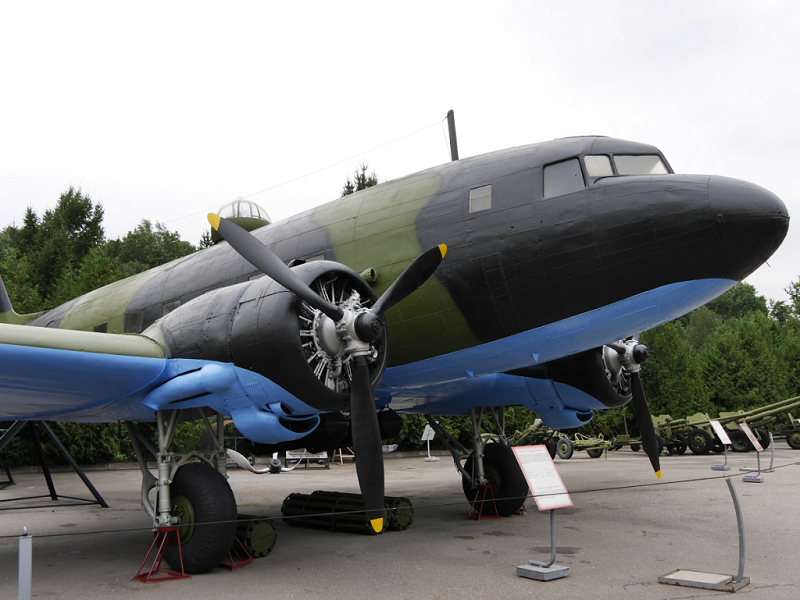The Lisunov Li-2 (NATO reporting name: Cab), originally designated PS-84, was a license-built Soviet-version of the Douglas DC-3. It was produced by Factory #84 in Moscow-Khimki and, after evacuation in 1941, at TAPO in Tashkent. The project was directed by aeronautical engineer Boris Pavlovich Lisunov.
The Soviet Union received its first DC-2 in 1935. A total of 18 DC-3s had been ordered on 11 April 1936, and the government of the USSR purchased 21 DC-3s for operation by Aeroflot before World War II. A production licence was awarded to the government of the USSR on 15 July 1936. Lisunov spent two years at the Douglas Aircraft Company, between November 1936 and April 1939 translating the design.
One of the engineers who accompanied him to Douglas was Vladimir Mikhailovich Myasishchev. Design work and production were undertaken at State Aviation Factory 84 in Khimki (now a suburb of Moscow). The Soviet version was given the designation PS-84 – Passazhirskiy Samolyot 84, passenger airplane 84 (i.e. made in GAZ/State Aircraft Plant No. 84).
Despite the original intention to incorporate as few changes as necessary to the basic design, the GAZ-84 works had to make some 1,293 engineering change orders to the original Douglas drawings, involving part design, dimensions, materials and processes, most as a part of metrication of the design from U.S. customary units to suit Soviet standards, no small task for Vladimir Myasishchev to accomplish.
The well-established Shvetsov OKB-19 design bureau, responsible for the great bulk of the Soviets’ air-cooled radial aviation powerplant designs of the 1930-40s, used their Shvetsov ASh-62IR radial engines, a Soviet development of the nine-cylinder Wright R-1820 Cyclone 9, to power the PS-84. The same Wright Aeronautical Cyclone 9 radial also powered the earliest Douglas DST “Sleeper Transport” versions, and initial 21-passenger versions, of the original American DC-3 airliner.
Some military versions of the Li-2 also had bombing equipment—such as bomb sight and bomb racks, and defensive turret, unlike the military C-47 development of the DC-3. The defensive armaments consisted of MV-3 dorsal turret with a 7.62 mm (.30 in) ShKAS machine gun, later replaced with a 12.7 mm (.50 in) UBT heavy machine gun. Additionally two ShKAS machine guns on pivot mount could also be mounted on both sides of the rear fuselage near the cargo door. A version designated Li-2VV (Voyenny Variant = military variant) had a redesigned nose for extra ShKAS machine gun and could carry up to four 250 kg (551 lb) bombs under the central fuselage. Smaller bombs could be carried inside the fuselage and thrown out of the cargo door by the crew.
Power – 1000 hp. The speed is 275 km / h. The flight range is 2150 km.
Museum of the Victory, Moscow













